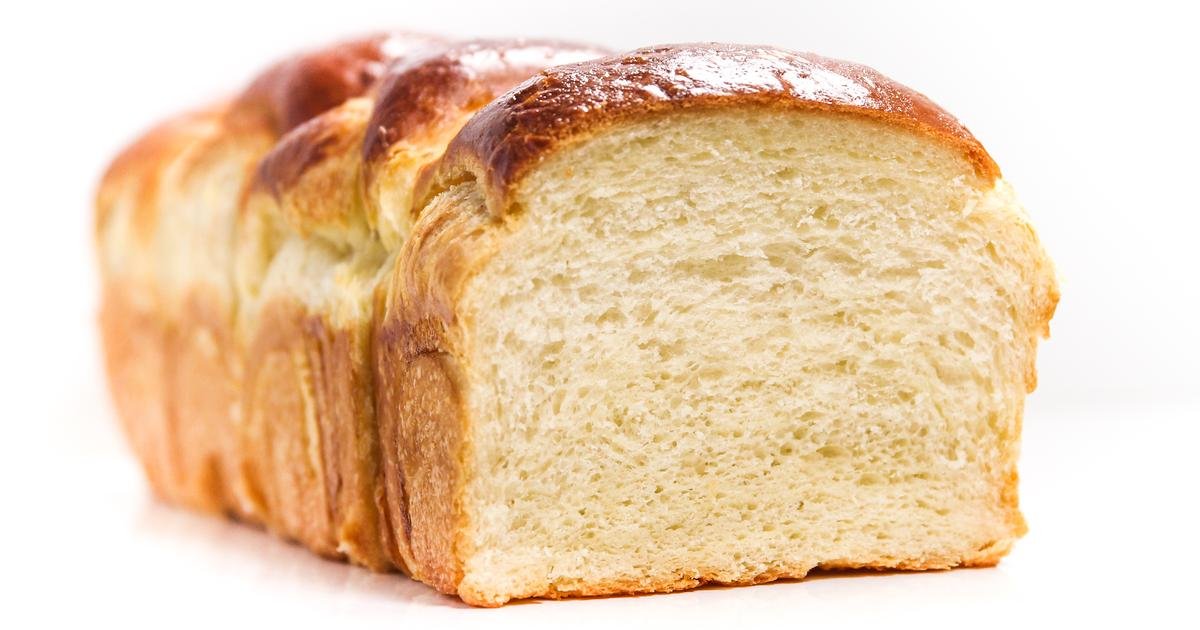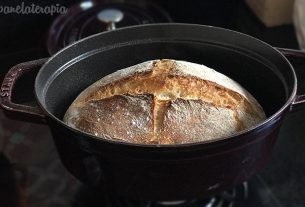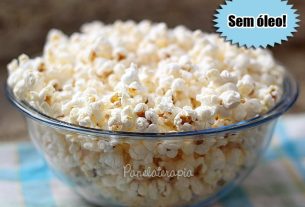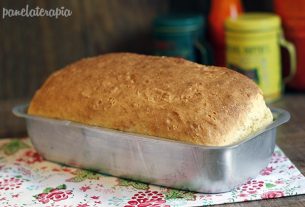Can you believe it: Milk bread cutest and softest you’ve ever seen in your life. It looks like a cloud pillow… and has that incredible flavor!
After making the No-Knead Bread, which has a firmer, harder crust, let’s go to the opposite! One Milk bread super, super, super soft… so soft it’s like those memory pillows: you knead it, and it goes back to normal.
Therefore, it needs a name: The Fluffy! It’s an amazing and delicious bread, seriously. It makes you want to eat it plain, you don’t need anything else.
But what is the magic dele? Technique! O method It’s so robust that I used one of my recipes as a base (Pão de Leite) and adapted it so that I could use the technique in question. So I could really see the differences.
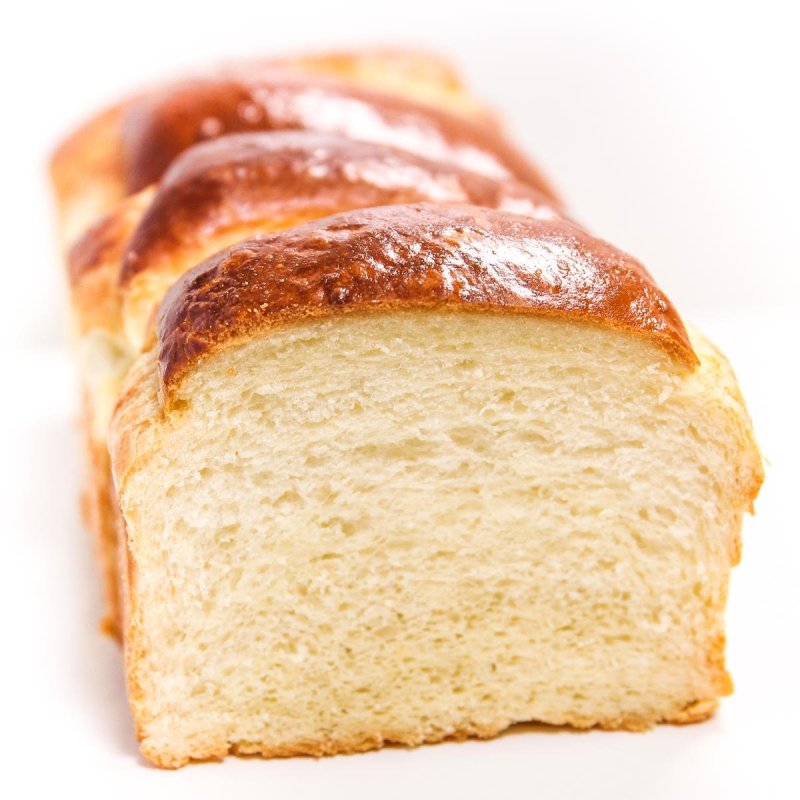

What is Tangzhong or Yukone?
A technique of Asian origin in which part of wheat flour e water (or the main liquid in the recipe) are cooked until they become a pasta.
The method is used in several Asian breadsvery common in China, Japan and probably in Korea. The main published reference is a 2007 book by Yvonne Chen: 65°C Bread Doctor.
When cooking flour with water, this causes the starch present to suffer gelatinization (yes, the term gelatinization is related to starches and not gelatin): breaking of intermolecular bonds inside the starch granule heat and waterallowing the starch interact with the water.
And this is precisely the great idea of the method: by allowing the water becomes trappedthis reflects the final quality of bread.
The main ones points of difference they are:
- Less free moisture (water), mass is less sticky and easier to work with.
- O growth could be greater because there is more water in the dough.
- O crumb fica super soft.
- Lasts longer without getting dry.
A amount of Tangzhong in the recipe may vary between 5-10% and some charitable souls on this internet tested it with values above thatand saw no difference.
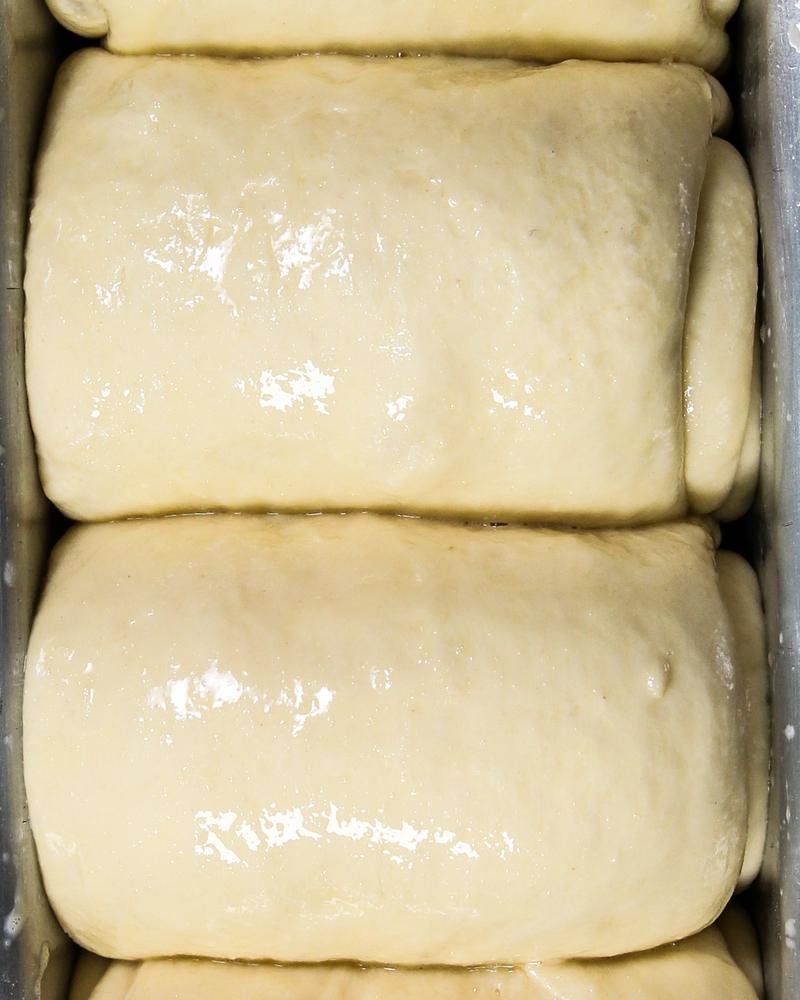

This 5-10% percentage is for the amount of wheat flour which should be used to prepare the Tangzhong. And for the amount of liquid is in 1:5 ratioi.e, 1 part flour for 5 parts liquid.
Both the amount of wheat flour how much of liquid and the present in the recipenot that it should be added to more.
Because of all these factors, not all recipes can use the technique Tangzhong directly, for example: to use the method, the bread needs to be at least 75% hydration.
Fermentation
Care is needed more attentive in fermentation, or rather, in fermentation time influences the shape of the bread.
In most cases, the differences are visual. The texture and flavor will still be delicious.
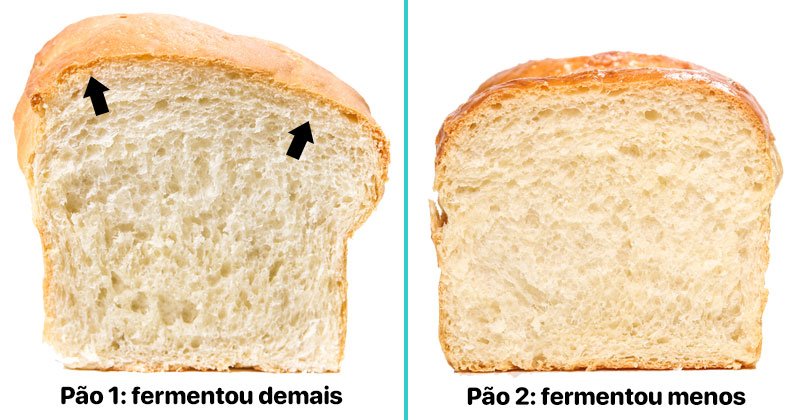

- Bread 1: it fermented too much, you can see it in the arrows the difference in the height of the type of bread.
- Bread 2: it fermented less, it was less tall than it could have been.
What also influences a lot are the stages of dough separation it’s from bread mold/shape. If they are not made carefully, the bread may turn out like Bread 1 of the photos.
Finishing
Bread finishing can be done with water or ovoand each of them has a different result.
It is purely visualboth the flavor as for texture They look the same regardless of the type of finish you choose.
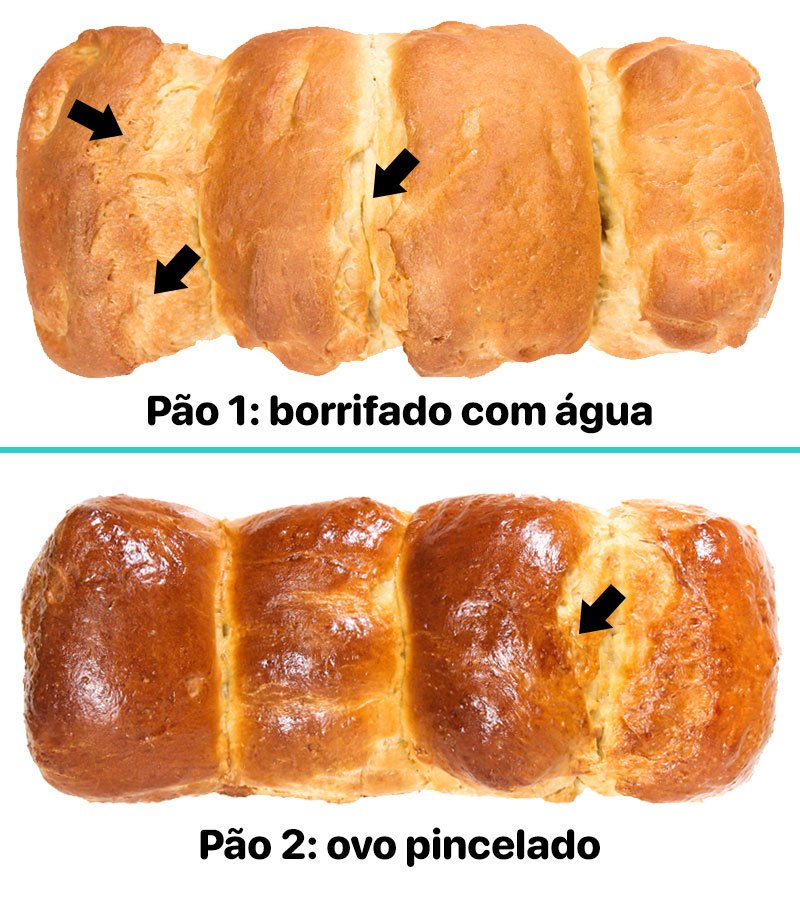

- Bread 1: sprayed with water, bread becomes opaque in the style of homemade milk bread that we are more accustomed to. The arrows indicate points where the dough tore due to fermenting too much.
- Bread 2: Brushed with egg, shiny and golden crust, reminiscent of brioche bread. The arrow shows a point where the dough has torn which may have been due to too much fermentation or the molding stage was not done correctly.
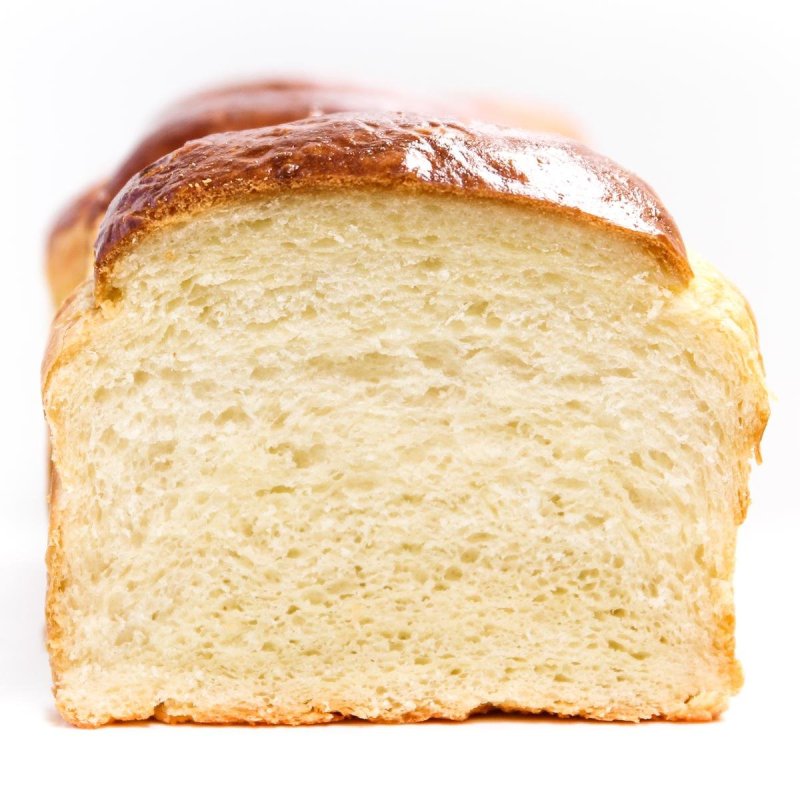

Steps of the Tangzhong/Yukone technique
- Ideally, the bread recipe should have at least 75% hydration.
- The amount of Tangzhong added varies between 5-10% wheat flour of the total amount of the recipe.
- The ratio of flour and liquid to make Tangzhong is 1:5 parts. I.e, 1 part flour for 5 parts liquid.
- The recipe used here considered the amount of water inside the egg to calculate the 75% hydration.
Super Soft Milk Bread (Tangzhong, Yukone)
Makes: 14 slices (1 30x9cm loaf)
Tangzhong
- 200 g skimmed milk (BP: 50%)
- 40 g wheat flour (BP: 10%)
Milk bread
- 65 g skimmed milk (iced; BP: 16.25%)
- 75 g vegetable oil (BP: 18,75%)
- 40 g crystal Sugar (BP: 10%)
- 6 g refined salt (BP: 1,5%)
- 50 g ovo (about 1 unit; ice cream; BP: 12.5%)
- 6 g instant dry yeast (BP: 1.5% (see note))
- 360 g wheat flour (BP: 90%)
Finishing
- 1 ovo (whipped; for brushing, optional)
- 20 mL water (to spray)
1 cup: 250mL | 1 tablespoon: 15mL.
Tangzhong / Yukoke
- Cook the flour and milk in a pan over medium heat until it turns into a viscous paste, about 3-4 minutes, stirring constantly. This step can also be done in the microwave every 30 seconds and stirring.
- Transfer the paste to the bowl where the bread will be made.
Milk bread
- Add milk, oil, sugar and salt to the same bowl as the flour paste (Tangzhong/Yukoke) and mix with a whisk until semi-uniform. It’s more to lower the temperature of the flour paste.
- Add egg, yeast and mix until uniform.
- Add the rest of the wheat flour, stir just to combine without leaving any dry flour spots.
- Let it rest for 20 minutes covered with a damp cloth.
- Knead the dough for about 10 minutes if you do it by hand or for 5 minutes in a mixer with the hook attachment. The dough is super soft, and when kneaded it becomes slightly firmer.
- Let it rest for 1 hour covered with a damp cloth, it should double in size. If the day is colder, leave it for 1 hour and 30 minutes.
- Remove the dough from the bowl and flatten slightly to remove the gas.
- Separate the dough into 4 parts, I recommend weighing the dough. Generally, the total mass is around 800g. So, each piece is about 200g.
- Roll each piece to form a more uniform ball shape. Cover with a damp cloth and let rest for 20 minutes.
- Grease a rectangular pan measuring approximately 28x11x6cm with oil. Reserve.
- Roll out each piece of dough with a rolling pin to form a uniform disc. Sprinkle flour both on the dough and on the surface to prevent it from sticking. Turn the disk over to leave the smoother side down and shake off any excess flour.
- Fold the vertical sides of the disc to the center forming a rectangle and use the rolling pin to roll out the dough to enlarge the rectangle. It should remain a rectangle, approximately 40x8cm.
- Crumple the end of the rectangle closest to you, then roll up the rectangle starting with the uncrushed end. Forming a uniform roll, repeat the process with the rest of the dough.
- Place the rolls inside the greased pan, leaving a little space between them.
- Let it rest for 1 hour covered with a damp cloth, it should double in size. If the day is colder, leave it for 1 hour and 30 minutes.
- Preheat the oven to 180°C when halfway through the bread’s resting time.
- Brush a beaten egg over the bread if you want a golden, shiny finish. Or spray water over the bread to give it an opaque finish.
- Bake at 180°C for 35-40 minutes or until golden brown and the internal temperature of the bread is greater than 87°C.
- Remove the bread from the oven and unmold. Let it cool on a wire rack before eating, it needs to cool.
- Flour: bread is easier to work with flours with a higher protein content. I suggest: Venturelli (12%) e Arapongas (14%); Anaconda (10%) Normally, the dough is softer than ideal (you can use it, but it loses a little structure).
- BP: baker’s percentage, the baker’s percentage as the bread recipe is generally written. The amount of the ingredient is in relation to the total amount of flour. I posted it for anyone who wants to know.
- Dry biological yeast: works with any brand, but if you don’t have that much experience in the kitchen. That said, I recommend using yeast from Fleischmann on hotter days, and the Dr. Oetker on colder days and/or if left to ferment in the refrigerator (on hot days, Dr. Oetker’s fermentation is more intense).

Sign up for our newsletter and stay up to date with exclusive news
that can transform your routine!
Warning: Undefined array key "title" in /home/storelat/public_html/wp-content/plugins/link-whisper-premium/templates/frontend/related-posts.php on line 12
Warning: Undefined array key "title_tag" in /home/storelat/public_html/wp-content/plugins/link-whisper-premium/templates/frontend/related-posts.php on line 13

